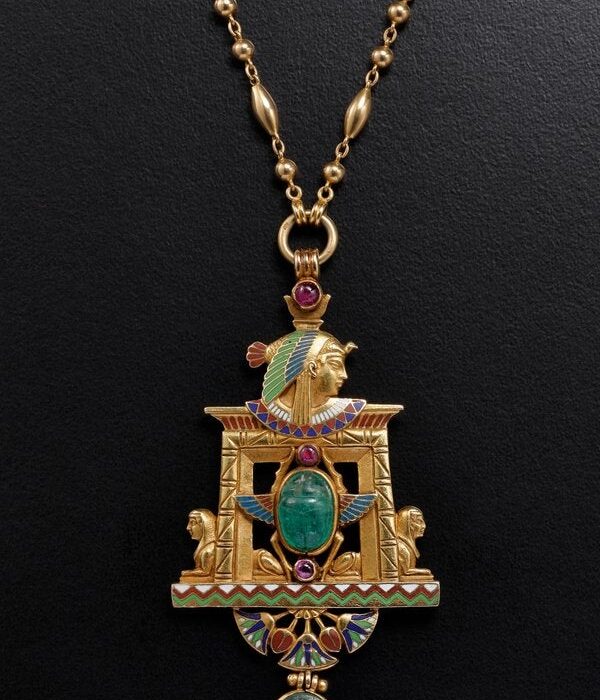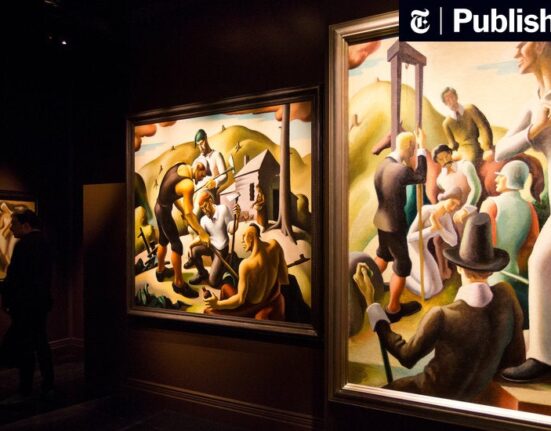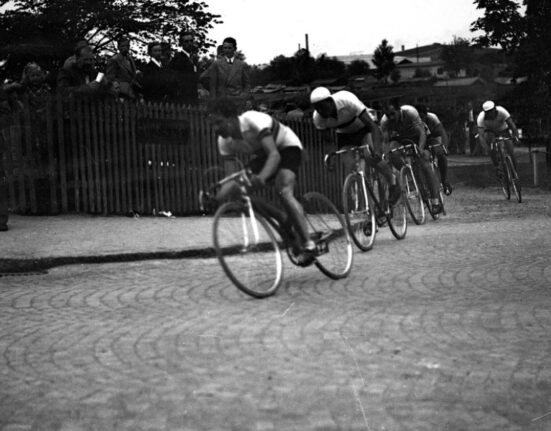AMSTERDAM — In November 1641, the Spanish trade galleon Nuestra Señora de la Limpia y Pura Concepción sank just off the coast of what is now the Dominican Republic, taking with it one of the richest cargoes ever to set sail for Europe from the New World.
It was not until 1993, with the help of National Geographic and an expedition company called Silver Bank, which had an exclusive contract with the Commission of Underwater Archaeological Recovery of the Dominican Republic, that the galleon’s sea treasures were retrieved.
Among the finds was a set of buttons and a jewel in an obliterated wooden chest, and an unusual thick gold necklace, which would have been worn by a man during the voyage across the Atlantic and then broken apart and used as currency.
These shipwreck gems highlight the jewelry offerings at this year’s European Fine Art Fair in Maastricht, the Netherlands, which opened its 27th edition on March 15. “I’ve never seen anything like that before — only in paintings,” said Deborah Elvira, an antiques dealer from Spain who has been entrusted with the sale of the works. “For me personally, as a Spanish dealer focusing on 17th century jewelry, it’s like being a kid again to have these treasures.”
Jewelry accounts for about one billion euros, or $1.38 billion, of the fair, about half the entire estimated value of the art, antiques and other collectibles dealers are offering at Tefaf, as the Maastricht fair is known. This year’s so-called Haute Joaillerie section consists of six of the world’s best known jewelers, such as Van Cleef & Arpels, which joined the fair for the first time last year, and Graff Diamonds, a veteran participant, whose jewels alone account for about a half a billion euros.
There are a further 13 antiques and design galleries that will also sell jewelry at Tefaf, including Didier Ltd., which handles wearable art by postwar painters and sculptors such as Man Ray, Alexander Calder and Picasso.
Brussels-based Fine Art Silver, for example, will be offering a dozen exquisite Art Nouveau bijoux pieces from a personal trove of Chantal Pauwels, the 62-year-old Belgian collector. Mrs. Pauwels bought her first piece of Art Nouveau jewelry — “The Swan,” a signed Philippe Wolfers pendant circa 1900 — from Francis Janssens van der Maelen, who owns the gallery, in 1988, and became so enamored of it that she started to follow the market for other works of the same period, 1900 to 1920.
Mrs. Pauwels continued to buy jewelry until about 1996, finding works for auction at art fairs, including Tefaf and the Biennale de Paris, with the help of Mr. Janssens van der Maelen, who kept a lookout for special items that would suit her taste.
“The jewelry is full of details of the nature — the leaves, flowers are so delicate,” Mrs. Pauwels said in an email. “I am a lover of flowers anyway, but what these craftsmen did make to us all was so remarkable, so brilliant. All works made in those days were so full of elegance, delicacy.”
She is selling them, she said, because “being 62 now, I now and then consider the future and in fact it is wise for our estate planning.”
Mr. Janssens van der Maelen is hoping to sell the entire collection for €1.9 million, but if he cannot find a buyer for the set, he would also consider selling pieces individually, he said.
In the Haute Joaillerie section, Chopard will be presenting the world’s largest chameleon diamond, weighing 31.32 carats. Chameleon diamonds are among the rarest diamonds in the world, because they are the only 100 percent natural diamonds that change color. When heated with a hair dryer, or left in a dark box for 24 hours, the stone turns from its usual olive green to a warm, golden yellow or light yellow.
The diamond is in a ring with a snake-like setting, with gems that include all the different possible colors of the diamond. Chopard is asking “about $7 million” for the ring, said co-president and artistic director Caroline Scheufele, though the exact price is given “on request only and is not fixed.”
“It’s quite mysterious and magical,” she said. “These stones are very rare, because it means the material is still alive inside.”
The diamond has been in the Chopard vaults for some time, said Ms. Scheufele, but it is being presented because “there is a lot of hype about exceptional diamonds right now in the international market.”
“I personally love the fair,” she said. “It’s really the best of the best of the worlds of antiques and art, so that’s the right place to show it.”
Ms. Elvira, who is offering the jewels from the Spanish galleon, said the sellers also specifically wanted to offer the works at Tefaf, because of the fair’s reputation for attracting serious collectors. For her part, Ms. Elvira hopes she can sell the galleon gems to a museum “or someone who is cultivated with a good knowledge of history and a desire to keep something important for the future.”
She continued: “You know all these stories about the ships; how difficult it was to cross the Atlantic; all the people that lost their lives. These beautiful pieces in some way reconstruct that history. It’s unique, it’s well documented and it has this magical, a little bit, aura of the discovery.”
That is a sentiment Mrs. Pauwels shares. “I couldn’t think of a more appropriate place to show these pieces. I couldn’t bear the thought of an auction house. Imagine the idea of them ‘hammering’ away.”







